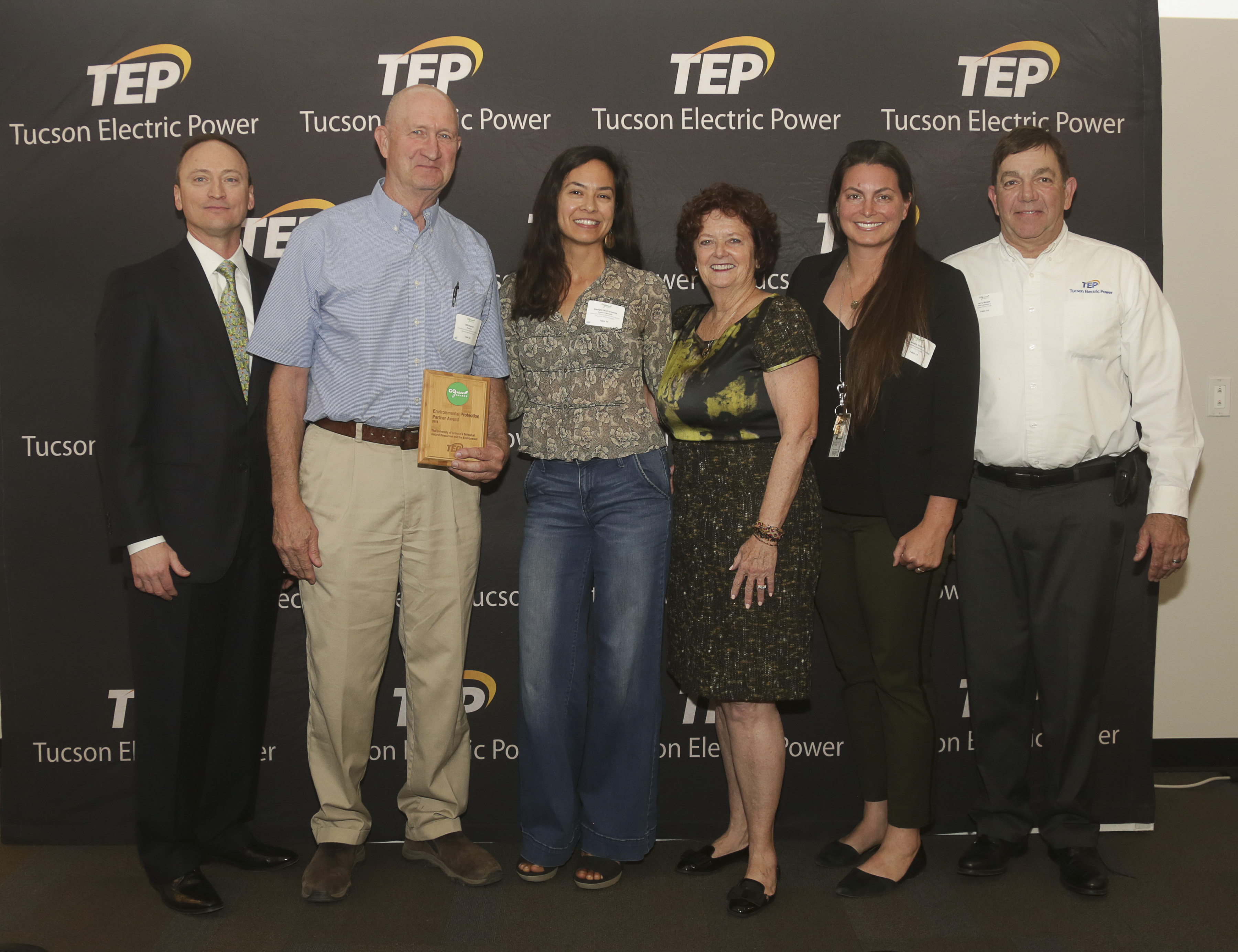Raptor Protection Program Receives Environmental Protection Partner Award 2019
TEP Award to Mannan et al 19.jpg

What is the Raptor Protection Program?
Dr. Bill Mannan: The Raptor Protection Program is a collaborative effort between the University of Arizona and Tucson Electric Power Company (TEP) designed to reduce the number of hawks and owls electrocuted on Tucson’s overhead distribution system.
How did this program begin? Has it always been a partnership between the UA and TEP? Describe the partnership between TEP and UA.
Mannan: The program has always been a partnership between the UA and TEP, and began over 20 years ago when we discovered that the social breeding system of Harris’s hawks nesting in Tucson was being negatively affected by the electrocution of key members of breeding groups.
The program took years to develop, but currently has two main components. The first is a reactive component in which Starlight responds to reports from home owners that a hawk or owl has been electrocuted on a utility pole near their residence. Starlight investigates the location and then submits to TEP the pole or poles that require modification to make them safe (i.e., insulation of places on the pole where electrocutions can occur).
The second component is proactive in that potentially dangerous poles within 300 meters around active nests are modified before electrocutions occur. Starlight’s job in this component is to locate actives nests of Harris’s hawks, red-tailed hawks, and great horned owls and report their locations to TEP. Personnel from TEP then modify the poles near nests identified by Starlight as potentially dangerous.
At the end of each year, Starlight re-visits all nest sites and electrocution sites and assesses how well TEP met their protocols for protection, and then reports her findings to TEP.
How long have you both been involved with this program?
Mannan: I have been with the program since it began. Starlight has been with the program since 2013.
What is your research and how has it benefited the raptor program?
Mannan: For the last 25 years, my research program has focused on the effects of urbanization on the population dynamics of predatory birds. Research projects done by past graduate students have been key drivers in the initiation and development of the Raptor Protection Program. James Dawson’s work on the sociality of Harris’s hawks identified electrocution as a significant agent of mortality in Tucson, and James Dwyer’s work on electrocution provided key information about the relationship between nest location and electrocution and the effectiveness of modifying poles.
Why did you receive this award?
Mannan: TEP awarded UA's School of Natural Resources & the Environment the Environmental Protection Partner Award for its long-standing partnership with TEP to protect large birds from electrical lines and equipment through the Raptor Protection Program.
What is the most rewarding aspect of working with this program?
Starlight Noel-Armenta: I enjoy the conversations I have with Tucson's residents while I'm out in the field. I've learned that there are a lot of people in the community that love to watch the wildlife in their neighborhoods and I've had the benefit of hearing many amazing stories. It's heartening because there seems to be an inherent shared responsibility in our community for the welfare of wildlife.
Mannan: The most rewarding aspect of working with this program is that it seems to be having a positive influence on populations of predatory birds, at least on a local scale.
How is this program going to benefit Tucson, or Arizona, moving forward?
Mannan: In terms of the electrical infrastructure, with TEP's protocol to safeguard all newly installed poles combined with the program's efforts to modify existing poles around nests, it makes sense to assume that the number of raptor-friendly poles in TEP's service area will eventually surpass the number of unprotected poles. Following that logic, this should equate to fewer and fewer electrical incidents over time. And in the broader scheme, it’s our hope that individuals, organizations and businesses will be inspired by the program's applied efforts in creating changes that make a real difference.

